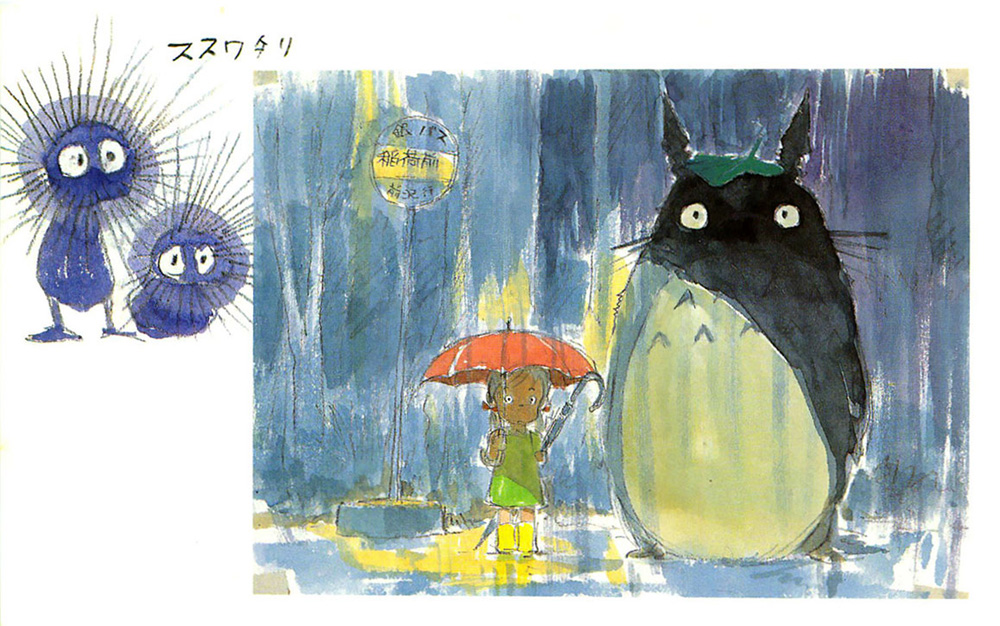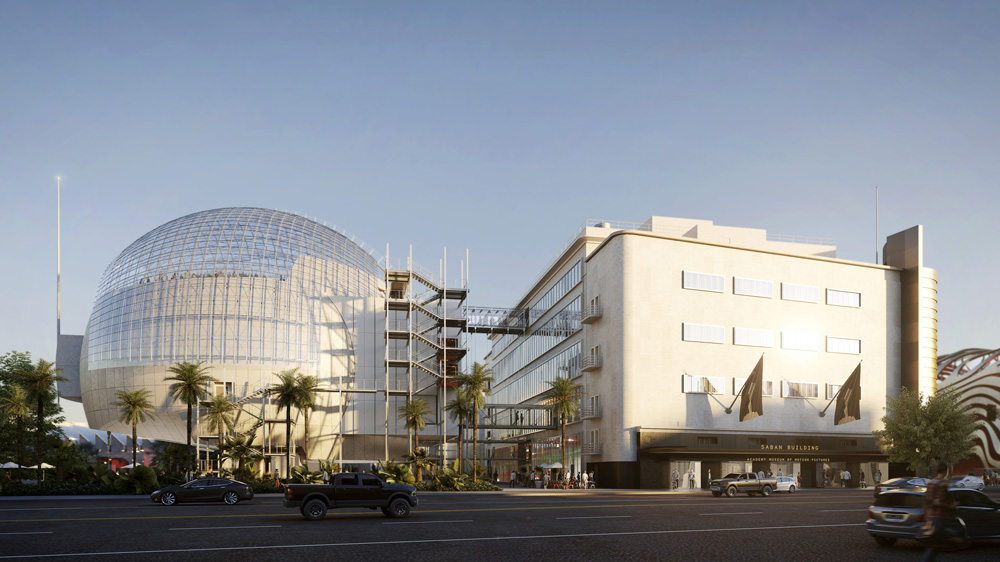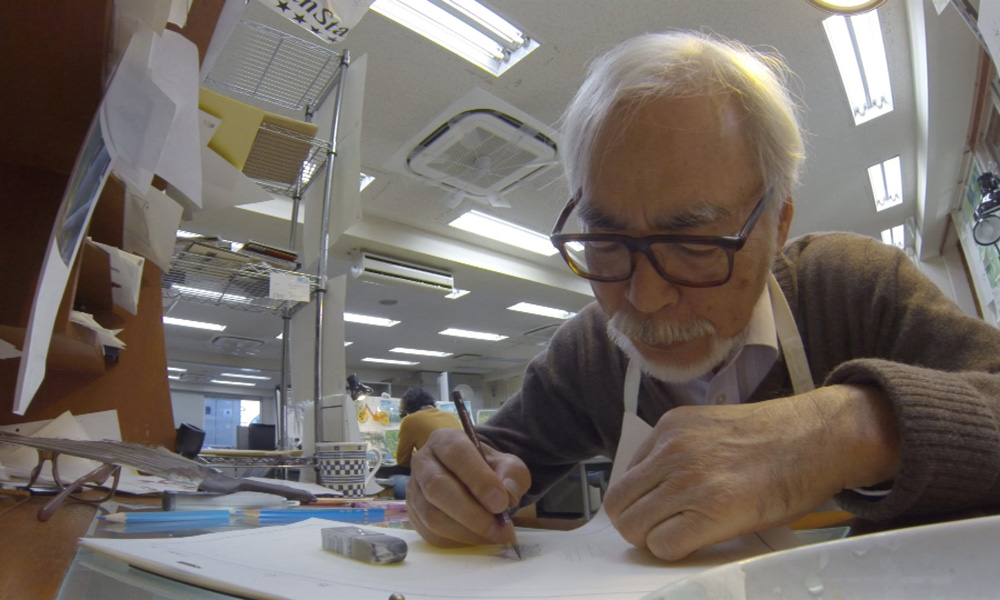Kerry Brougher, Director of the Academy Museum of Motion Pictures, announced the details of the inaugural exhibitions that will be on view when the Museum opens in late 2019. Where Dreams Are Made: A Journey Inside the Movies (working title) will occupy two floors of the iconic Saban Building — formerly known as the May Company building — and looks at the development of the art and science of motion pictures.
Brougher also announced the institution’s first temporary exhibitions. The Museum will open with Hayao Miyazaki (working title), the first major exhibition of his work presented in the United States. Curated by Jessica Niebel in collaboration with Studio Ghibli, the exhibition will take visitors on a thematic journey through the acclaimed, Oscar-winning animation filmmaker’s cinematic worlds using original production materials from Studio Ghibli’s archives and features such films as My Neighbor Totoro (1988) and Spirited Away (2001). The exhibition will present more than 200 concept sketches, character designs, storyboards, layouts, cels, backgrounds, film clips and immersive environments. A catalogue, film series, and public events will accompany the presentation, and unique Studio Ghibli merchandise will be sold at the Museum’s shop.
This will be followed by Regeneration: Black Cinema 1900–1970 (Fall 2020), a groundbreaking exhibition that reveals the important and under-recognized history of African-American filmmakers in the development of American cinema, and representation in the motion picture from its advent to just beyond the Civil Rights era. Co-curated by Doris Berger and Rhea Combs, Supervisory Curator of Photography and Film at the Smithsonian’s National Museum of African American History and Culture (NMAAHC), it will be the first exhibition research-driven, in-depth look at Black participation in American filmmaking. In addition to offering a critical exploration of Hollywood productions, Regeneration will highlight the work of independent African-American filmmakers and create dialogues with visual artists. The exhibition’s goal is to redefine American film history as it elevates this under-represented aspect of artistic production and presents a more inclusive story. The curatorial team is collaborating with an advisory panel of scholars and filmmakers throughout the development of the exhibition. Regeneration is the proud recipient of the Sotheby’s Prize — an annual award that supports and encourages museums to break new ground.
The Museum’s 34-foot-high project space in the Hurd Gallery will open with a major work by teamLab, curated by Kerry Brougher and Deborah Horowitz. teamLab is a Tokyo-based interdisciplinary art collective based in Tokyo comprising more than 500 artists, programmers, engineers, CG animators, mathematicians and architects. The work, Transcending Boundaries, presents a site-specific, real-time, ever-changing environment that allows the viewer to engage directly with the artwork itself.
Additional exhibitions will include Making of: The Wizard of Oz, featuring elements that contributed to the creation of this iconic film, a history of the Academy Awards, and an Oscars experience.
“We want the Academy Museum to add to the public’s understanding of the evolution of the art and science of filmmaking around the world — to increase appreciation for this great art form and encourage people to examine the role of movies in society. At the same time, we want to bring to life the most important reason of all for caring about the movies — because they’re magic,” said Brougher. “That’s why we intend to transport our visitors into a world that exists somewhere between reality and illusion. Like the experience of watching a movie, a trip to the Museum will be a kind of waking dream in which visitors feel as if they’ve slipped through the screen to see how the magic is created.”
Dawn Hudson, CEO of the Academy of Motion Picture Arts and Sciences, said, “It’s been 90 years since the founders of the Academy proposed creating a museum of film in Los Angeles. How thrilling to be able to deliver on that dream. The Museum’s exhibitions are as expansive and imaginative as the movies we love. With its piazza and open spaces, the Museum will be a gathering place for film lovers and will invite people from all over the world to re-experience and deepen our collective love of this art form, accessible to all.”
Where Dreams Are Made will unfold over 30,000 square feet on two floors of the Museum. It brings together evocative settings, key objects from the Academy’s unparalleled collections and the growing collection of the Museum itself, and an array of film installations.
The journey begins in the Spielberg Family Gallery of the Grand Lobby, with the installation Making of: The Wizard of Oz. Visitors will then ascend to the Wanda Gallery, through a corridor that acts as a transition from the real world into the dream-space of cinema, and emerge into the dramatic Magic and Motion gallery, which evokes the age of innovation and wonder in the 19th century. The Story Films gallery inside the restored iconic golden cylinder of the Saban Building will demonstrate how filmmakers around the world quickly developed techniques that unleashed this new medium’s potential, with examples of the first live-action and animated films and a focus on female film pioneers. A maze of monumental screens in the Light and Shadow gallery will feature sequences from the heyday of international silent film. In the Modern Times section, visitors will encounter three simultaneous moments in cinema history: the rise of Hollywood and superstars; the artistic and political eruption of Soviet cinema; and the development of independent filmmaking in America, including films starring all-Black casts and distributed to Black audiences, known as “race films.”
The Studio System follows the bustle of the Hollywood assembly line from the advent of talkies in 1927 to the decline of the studio system in the 1960s, exploring the fascinating dichotomy of the “dream” of Hollywood and the “factory” that made it possible with objects from the Academy’s collection, familiar faces and scenes, and spotlights on the era’s most unforgettable stars.
In the third floor Rolex Gallery, visitors will enter the Real World. This space will reveal how filmmakers responded to the tensions and challenges of a world changed by World War II, the advancement of technologies that let filmmakers everywhere capture their version of reality, the rapid growth of independent cinema and the individual expression (Italian Neorealism, French New Wave, Indian Parallel Cinema, Brazilian Cinema Novo), and how such approaches continue to impact and influence filmmaking to the present day.
An homage to the Stargate Corridor sequence from Stanley Kubrick’s 2001: A Space Odyssey (1968) creates a mind-bending passageway to the final section: Imaginary World. With the advent of new tools and technologies, cinematic visions are now limited only by the filmmaker’s imagination. Visitors will be transported to unfamiliar worlds of the past, present, and future to encounter many of the most memorable and beloved movie characters, creatures, and destinations and to hear from the filmmakers themselves how they have pushed the boundaries of filmmaking to make the impossible possible.
Assembled under the curatorial leadership of Brougher and Deborah Horowitz, Deputy Director of Creative Content and Programming, contributors to Where Dreams Are Made are Rick Carter, Oscar-winning production designer for Avatar (2009); curatorial staff Doris Berger, Jessica Niebel, Bernardo Rondeau, J. Raul Guzman, Dara Jaffe, Robert Reneau, and Ana Santiago; as well as producer Brooke Breton, Avatar; sound designer Ben Burtt, Star Wars: Episode IV (1977); staff from the Academy’s Margaret Herrick Library and Academy Film Archive, Academy governors and members, the Museum’s advisory committee on inclusion, and a range of film scholars and filmmakers. Gallagher & Associates, specialists in interpretive and experience design, are bringing their expertise to the project in order to realize the design and installations.
The Museum’s public programs will include panel discussions, symposia, gallery talks, and other public events. The 288-seat Ted Mann Theater will offer daily thematic and exhibition-related screenings, and special showings and events will be held at the 1,000-seat David Geffen Theater. Film programming is overseen by Bernardo Rondeau. In addition, the Museum will offer an innovative range of digital engagement platforms and interactives, including a groundbreaking app.

![Pioneering African-American director and studio founder Oscar Micheaux (center) on set. [Photo: New York Public Library, Schomburg Center for Research in Black Culture]](https://www.animationmagazine.net/wordpress/wp-content/uploads/Oscar-Micheaux.jpg)











 Win 'The Art of DreamWorks Dog Man'!
Win 'The Art of DreamWorks Dog Man'! 

